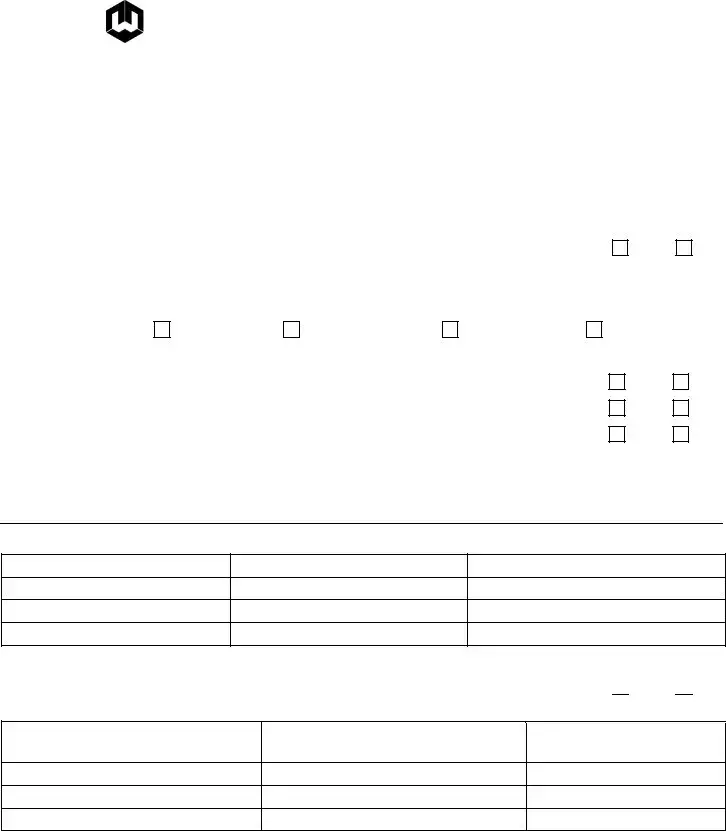The Federal Employment Application Form is one document that mirrors the Utah DWS WDD 305 form in several ways. Both require personal information, work history, educational background, and the positions for which the applicant is applying. Additionally, they ask about the applicant's ability to work in the United States legally, a vital step in the hiring process. Though the Federal form might include specific questions related to federal employment, the structure and objective remain closely aligned with providing potential employers a comprehensive understanding of the applicant's qualifications and legibility for employment.
Another document akin to the Utah DWS WDD 305 form is the Job Application Form used by many private companies. These forms often solicit similar information such as personal details, employment history, education, references, and the position being applied for. Like the Utah form, these private sector applications might also request details on specific qualifications or certifications relevant to the job. The primary aim is to gather enough information to determine if the applicant meets the job requirements, which is a common goal shared with the Utah document.
The State of California Employment Application (STD 678) also shares similarities with Utah's form, designed for individuals seeking employment within state agencies. Both forms necessitate comprehensive employment history, educational background, and specific job interests. They are tailored to assess qualifications for state-level positions, ensuring that candidates are well-matched with the roles they are interested in. Moreover, both forms include sections for veterans' preference, underscoring a shared commitment to supporting veteran employment.
The Generic Employment Application, often found in various formats online and used by small businesses, aligns with the Utah DWS WDD 305 form in its fundamental structure. These generic forms capture essential applicant information, including name, contact information, job history, educational background, and references. Although they may not be customized for specific types of employment like the Utah form, their broad applicability in collecting basic employment-related information connects them closely to the structured approach of the Utah document.
A Professional Resume is an individualized document detailing an applicant's employment history, educational background, achievements, and skills, which serves a similar purpose to the information requested in the Utah DWS WDD 305 form. While resumes are typically self-structured and can vary in format, the core information they provide mirrors what is requested in the Utah employment application. Both aim to present the candidate’s qualifications and experiences to potential employers, making the resume an unofficial, narrative counterpart to the structured form.
The LinkedIn Profile is a digital compilation of professional and educational experiences, skills, certifications, and career interests, similar to the content required on the Utah DWS WDD 305 form. Though one is an online profile and the other a paper or digital form, both serve to showcase the individual’s qualifications and employment history to prospective employers. LinkedIn profiles often provide a more dynamic and interactive overview but share the goal of the Utah form in facilitating employment opportunities.
Lastly, the Universal Background Screening form, used by employers to conduct background checks on potential hires, although not an application, it requests many of the same personal details as the Utah DWS WDD 305 form. Both forms are steps in the employment process, ensuring that candidates meet the necessary criteria for the jobs they are applying for. This screening form complements the application process by verifying the information provided, ensuring accuracy and suitability for employment.


 Yes
Yes  No
No